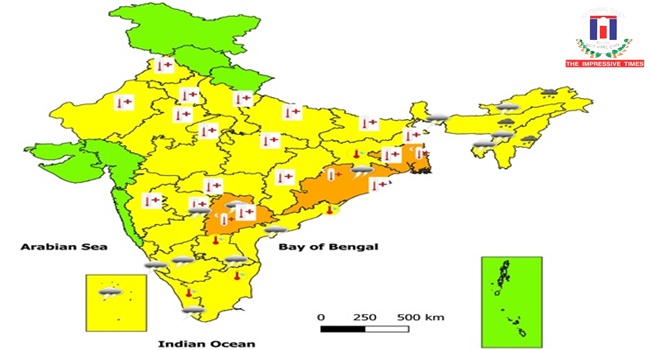
New Delhi : The India Meteorological Department (IMD) has issued a heatwave alert for large parts of Northwest India over the next three to four days, while simultaneously forecasting heavy to very heavy rainfall across several regions of the East and Northeast.
According to the IMD bulletin, persistent heatwave conditions are likely to prevail in West Madhya Pradesh, West Rajasthan, Punjab, Haryana, Delhi, and East Rajasthan until April 29. These regions are expected to record daytime temperatures significantly above normal, with some areas crossing the 45°C mark. Authorities have advised citizens to stay indoors during peak afternoon hours and stay hydrated.
Heatwave-like conditions are also expected in parts of central and eastern India. The IMD has forecast elevated temperatures in Chhattisgarh, West Bengal, Sikkim, Bihar, Odisha, Madhya Maharashtra, Marathwada, and Telangana until Friday. Additionally, hot and humid weather will prevail over Jharkhand, Tamil Nadu, Puducherry, Karaikal, Kerala, Mahe, Coastal Andhra Pradesh, Yanam, and Rayalaseema during the same period.
Meanwhile, the northeastern states are likely to experience a completely different weather pattern. The IMD has predicted heavy to very heavy rainfall over Sub-Himalayan West Bengal, Sikkim, Assam, and Meghalaya through Sunday. Isolated heavy rainfall is also expected in Arunachal Pradesh, Nagaland, Manipur, Mizoram, and Tripura.
Thunderstorm activity, accompanied by lightning and gusty winds, is also anticipated across the Northeast and parts of South India in the coming two to three days. These thunderstorms could temporarily disrupt visibility and travel, and residents have been advised to take precautionary measures, especially in vulnerable areas prone to flooding or landslides.
The dual nature of India’s weather this week — scorching heat in the north and center, and torrential rain in the east and northeast — reflects the transitional phase of the pre-monsoon season. Experts note that such weather extremes are becoming more frequent and intense due to ongoing climate variability.
The IMD continues to monitor developments closely and has urged local authorities to remain on alert for heat-related health emergencies and rain-triggered disruptions, especially in hill and low-lying areas.










No Comments: